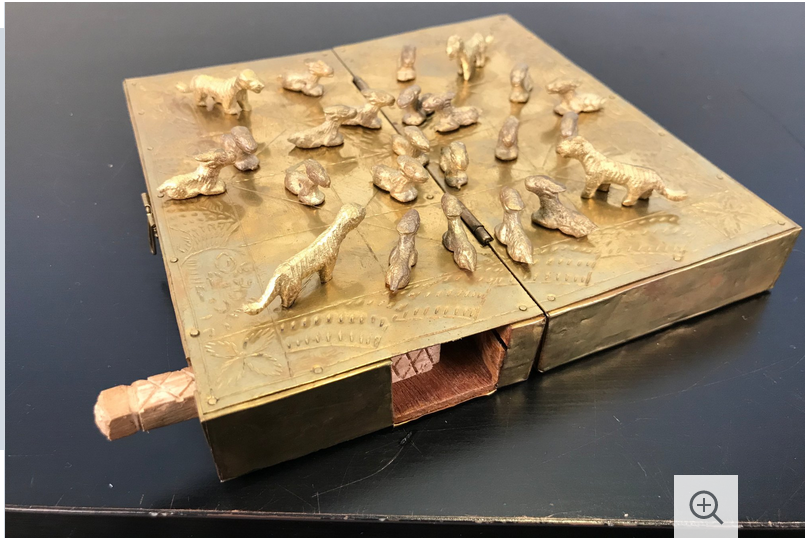For this assignment the Item from my home I selected is a Nepalese board game called Bagha-Chal which roughly translates to Tigers and Goats. I selected this item since it felt reasonably unique and like the kind of item that would make sense to include in a museum collection. For ease of comparison, I then went onto the University of Alaska Museum of the North Arctos database, and searched for board games for ease of comparison with a system I was vaguely familiar with. The item I settled on for my examination was item number UAM: EH:UA2009-007-0003AS or the Board Game: “North to Alaska”.
The board game in question was donated to the museum by one Candy Waugaman through an agent, to the Museum of the North Ethnology and History collection for general research and education purposes. Information about the items condition and physical description is provided, but information on its origin is lacking. Reports on the item make note of the lack of a firm geographical or temporal origin for the item. I will attempt to provide greater detail in my description of my own board game.
Accession
My own copy of Bagha-Chal was acquired as a gift from my parents in 2020 after they booked a travel agency for a trip to Nepal. The board game was purchased from a local shop and appear to be a fairly typical travel version of the game sold to tourists for commercial reasons, and is notable more for the overall rarity of the game, rather than any particular standout quality of the copy. To the best of my knowledge the game had no prior owners.
Possible follow up to determine the more exact origin of the game would best be done by contacting the travel agency Overseas Adventure travel (OAT), or time and money permitting a trip to Nepal to speak to locals either to gather more information or to acquire an original copy.
Description
My copy of Bagha-Chal consists of a folding board measuring 15 by 15 cm, with a rough weight of 300 grams. The board has a hollow compartment, secured by a retractable wooden pin, containing 24 pieces (4 tigers and 20 goats) and is patterned with a 5 x 5 square board on the interior surface. The board is hinged on the center line, constructed of pine wood, coated with a thin layer of brass, while the pieces appear to be cast from brass.
Conservation recommendations
The board and pieces show some signs of tarnishing and would likely need to be cleaned and polished for display. The set itself is complete and of sound construction though the retaining pin shows some wear and might potentially need to be replaced for display purposes.
Specific documentation or information on my particular copy of Bagha-Chal is lacking due to the informal nature in which was acquired, and establishing the total provenance of the object would be quite difficult. My question for you is this: What level of due diligence should individuals donating collections to museums invest in determining the objects origins and history?

Wow. Now that’s pretty cool… a board game. This raises so many questions about Nepalese culture. Like how prevalent was these types of board games and are they modeled from real-life games. As to your question, I think and maybe it was stated in a previous module that often times people donate items to museums in hopes that the museums can do the work of uncovering the historical narratives of artifacts and works of art.
I think that the people who donate to museums should do a little fact checking on their own. They should do a little bit of background checking as well, just to know the ethicality of the object. Not only would it help the museum, but it would help someone’s conscious to know that the thing that they are donating doesn’t have a shady past.
As a museum, I’d think the maximum time, effort, and money would be in finding out that my collection was not only authentic, but free from any legal or moral conflicts. A lot of the time there are moral conflicts with artifacts (especially indigenous items or jewelry), and as a museum director, I wouldn’t want my museum to be shaded by impropriety.